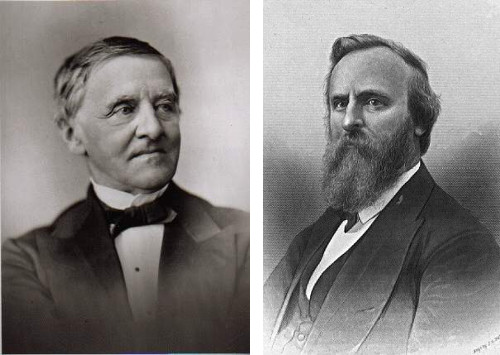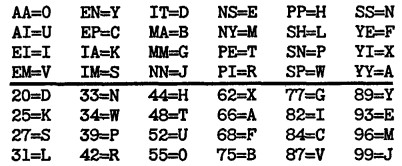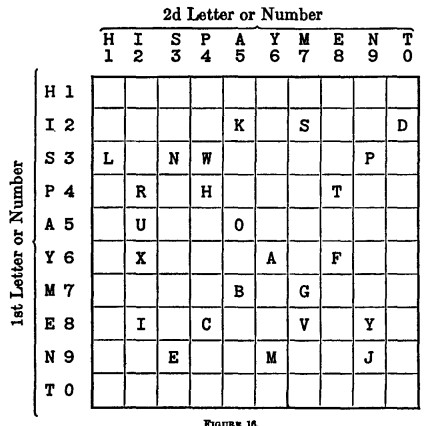
In the contentious presidential election of 1876, the campaign of Democrat Samuel Tilden sent many enciphered messages to its agents in contested states. Two years after the election, the New York Daily Tribune published some of the deciphered telegrams, showing that Tilden’s campaign had tried to bribe election officials to win the race. Here’s one of the telegrams:

Since only 10 letters are used, it seems likely that the cipher refers to pairs of letters. So if each successive pair in the message is assigned to an arbitrary letter:
![]()
… then we have a simple cryptogram that can be solved to give the message:

Tilden’s campaign did the same thing with pairs of numbers. For example, this message:

… turns out to mean:

In 1879 the Tribune’s experts worked out the letter and number pairs that had corresponded to each letter of the alphabet:

But it wasn’t until 1952 that cryptographer William F. Friedman reconstructed the table that the agents had used to remember this system:

“It is amusing to note that the conspirators selected as their key a phrase quite in keeping with their attempted illegalities — HIS PAYMENT — for bribery seems to have played a considerable part in that campaign.”
(From Beaird Glover, Secret Ciphers of the 1876 Presidential Election, 1991.)
